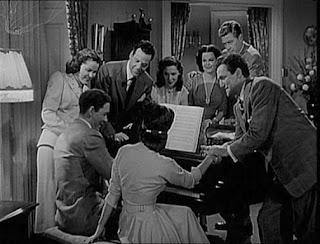Directed and produced by Cornel Wilde.
In 1890s Africa, a hunting party encounters a group of natives who demand a small payment for passage through their territory. The party’s guide (Cornel Wilde) sees it as a reasonable and customary request, but his client refuses, treating the natives with contempt. Offended, the natives attack the party at camp, and inflict punishments on the hunters and their bearers. The guide, saved for the last, is given the chance to run for his life, hunted like the animals his clients had killed.
The Naked Prey is a very literal entry in the man on the run genre, which pits an intelligent character against equally intelligent characters. It’s the best of the eight movies directed by actor Wilde, and, despite some slow sequences, manages to keep a good level of tension and excitement throughout. This is assisted by the rather horrifying tortures inflicted on the hunting party, and by the time and effort devoted to the personalities of the guide’s pursuers. Though their language is not accompanied by sub-titles, the acting and direction makes clear their own stresses and conflicts.
Also to be noted are the director’s messages depicted in scenes of nature. Numerous sequences show the brutality and ruthlessness of nature, animals fighting each other for survival. Interestingly, though the hunters are ‘shooting ivory’, the director makes it clear what he thinks of such activities, even using just a single still image to get his point across.
The acting is commendable. Wilde was a long-established player by this time, and well-respected. Ironically, therefore, though his performance is good, the actors who play his pursuers are the more interesting, particularly their leader (Ken Gampu, near the beginning of a long and successful cinematic career). His obsession with catching his prey becomes as dangerous to his fellows as does their quarry.
The dialogue is kept to a minimum, restricted mainly to the opening scenes featuring conversations between the guide and his client (Gert van den Berg), to show what they are like. There is also some talk between the guide and a little girl (Bella Randles); the two save each other’s lives but can’t communicate through words because each doesn’t comprehend the other’s language.
Also shown are the differences in native culture between the primitive interior tribe and the more advanced villagers closer to the coast. That disparity brings its own drama, inadvertently involving the fugitive in added danger. (It’s clear too that Wilde performs his own stunts; just running shows that he was in excellent condition for a man in his early fifties.)
A simple story, along the lines of The Most Dangerous Game, The Naked Prey is a straightforward, exciting movie, with surprising character development.
(Though the opening narration suggests the story takes place in the 1860s, the clothes, rifles and headgear of the Europeans indicate a later decade, and the British fort, Arab slavers, and the mention of Swahili place it in eastern Africa, though it was filmed in southern Africa.)




































